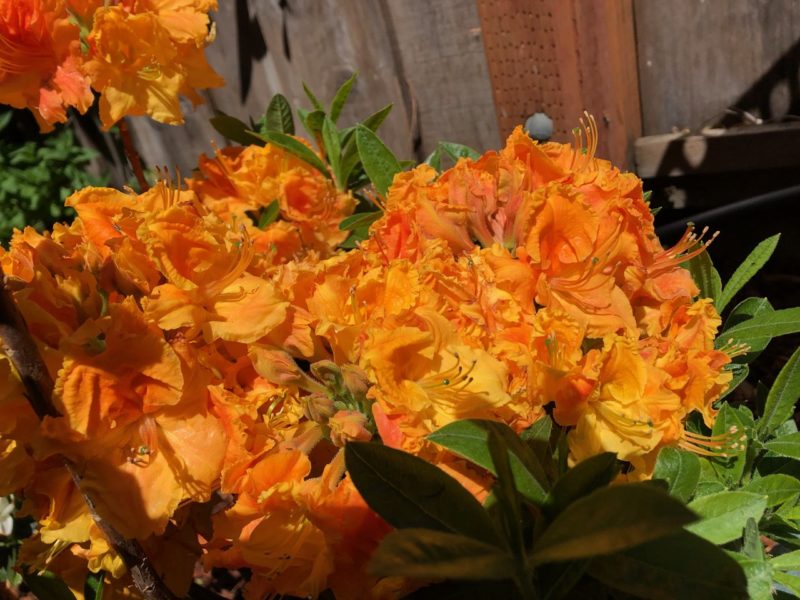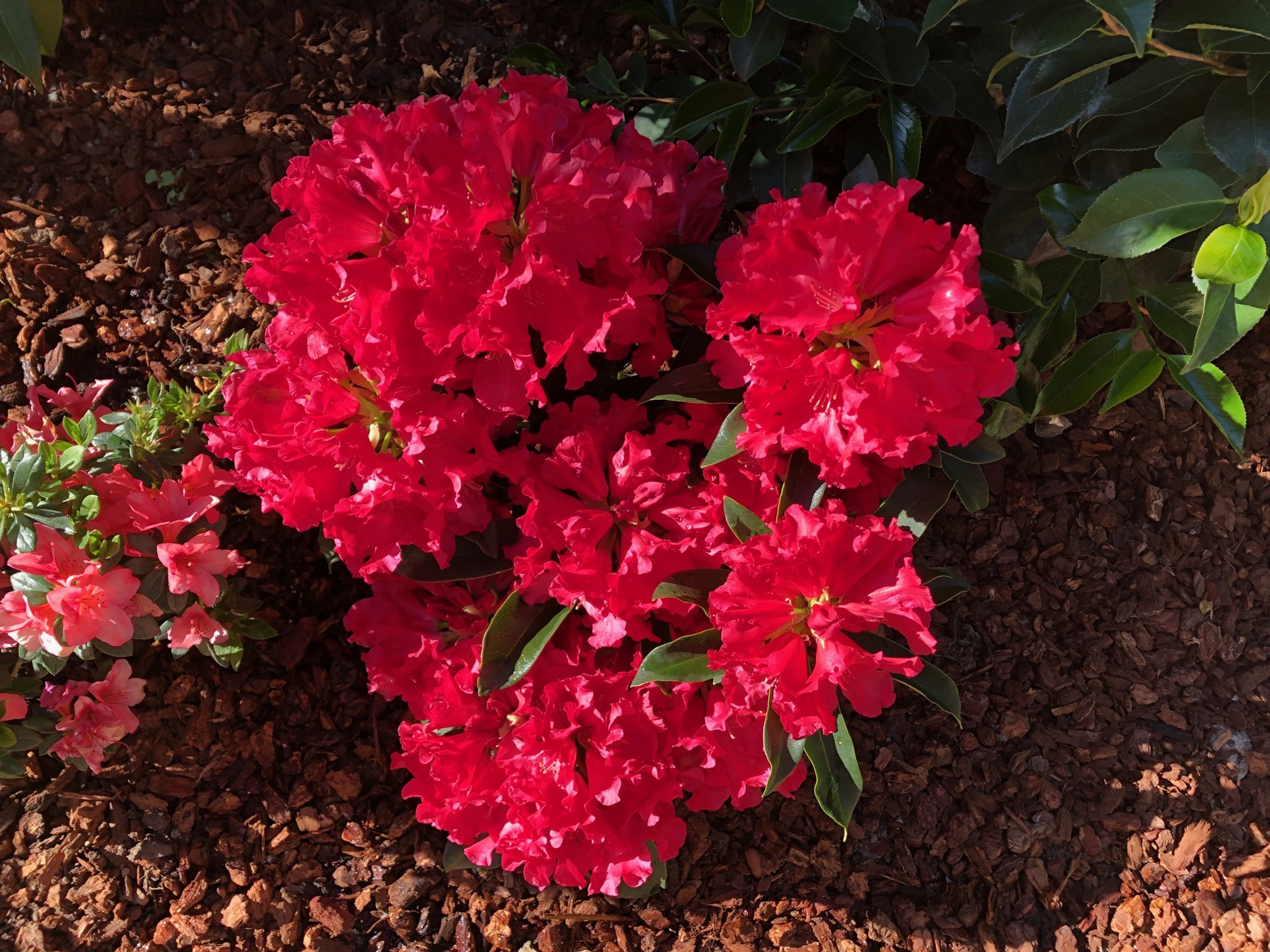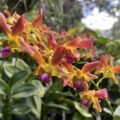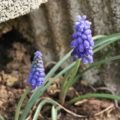Although much of my life has been lived in urban environments, I have a lifelong (if often frustrated) love of growing things. I’m not sure exactly how that came about.
The time I remember most in my early childhood was spent in Bangkok, even then a large and very urban city. But it was also tropical, and, for the latter half of our five years there, we lived in a large house surrounded by a lush tropical garden filled with plants that I came to love and now identify with the happier parts of my childhood.
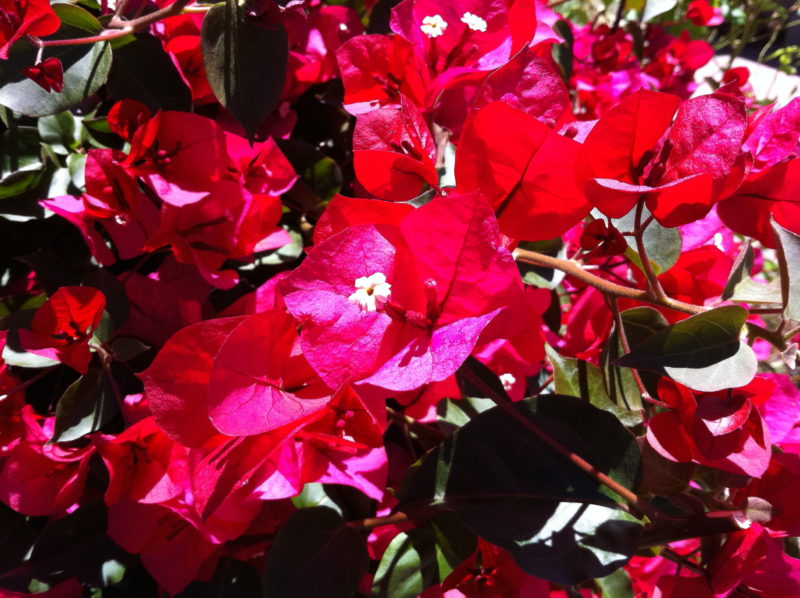
Our front fence was entirely covered in bougainvillea, which produced masses of magenta petals surrounding tiny white blossoms. It was also abundantly provided with thorns – an additional deterrent to burglars.
There was a bed of monstera or something like it near the back porch. It never produced any flowers that I can recall, but I loved the big, fleshy leaves.
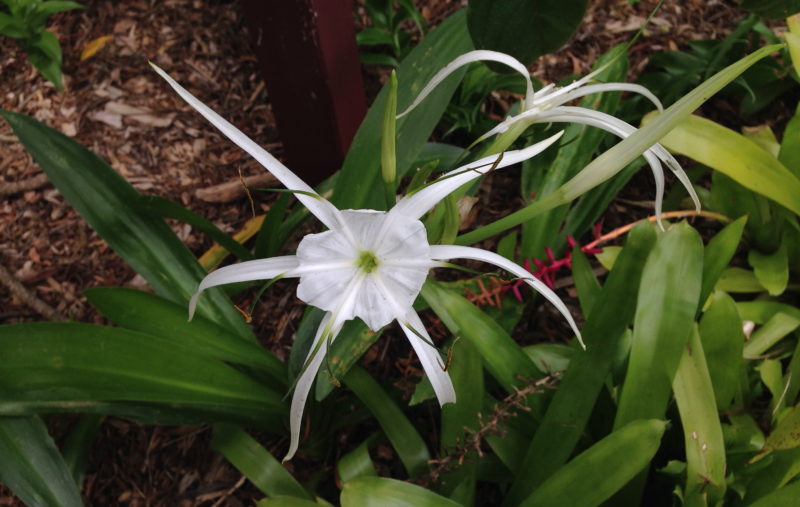
There were clumps of spider lilies, whose delicate white blooms only lasted a day or two, and less than an hour if cut and put in water (I tried, because they were so beautiful that I wanted to be able to look at them always).
There were trees as well. One produced a fruit called rose apple, of a roughly conical shape with a waxy white and pink skin (hence, perhaps, the name). It was edible, though not particularly tasty, but I ate it anyway, because I liked that I could just go pick something off a tree and eat it.
We also had a huge rubber tree, towering over our two-story house. Like all rubber plants, it tried to propagate via long roots that trailed down from its branches. I used to climb up into the crotch of the tree, about eight feet off the ground. I wound the roots around and filled the resulting nest with cloth scraps. This nest was for myself, though I don’t recall how long it lasted – presumably not through a rainy season.
I suppose we had someone who took care of the garden, mowed the lawn, etc., but this probably took place during my school day; I don’t remember doing any hands-on gardening myself, nor observing anyone doing it. But I kept a loving eye on my favorite plants.
I was envious of friends who had banana trees in their yards, not for the fruit (which we could easily get anyway) but because someone showed me how to make a hobbyhorse out of a banana leaf. Sections of banana trunk were also used to create the floating candle boats that would be set out on the river for Loi Krathong, the festival of lights.
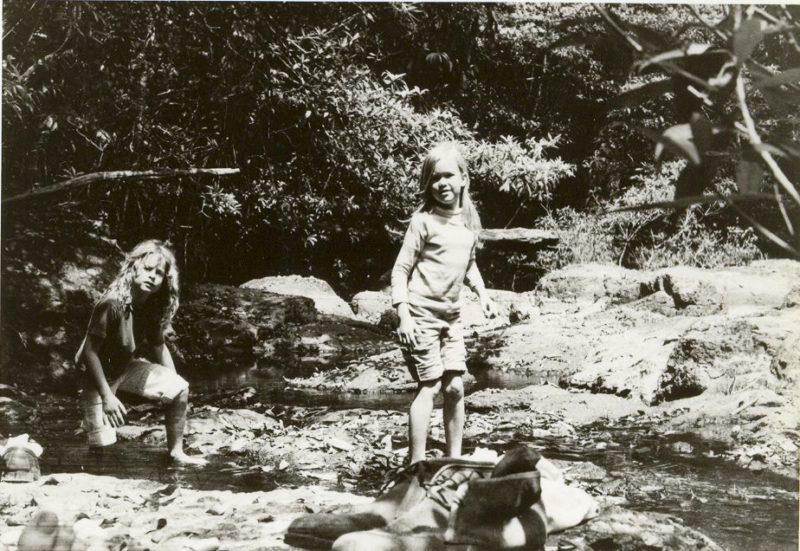
A favorite family getaway spot was Khao Yai National Park, where we’d go for long hikes through untouched rainforest. There I learned to look, but not touch: a great deal of the tropical rainforest vegetation would fight back with thorns and stings. And I learned to walk carefully on the narrow trails, avoiding vines that looped down and thorny branches obtruding on the path.
Then we moved to a dingy apartment in Pittsburgh. Fortunately, my soon-acquired stepmother liked houseplants, so we had several of the types that were popular in those days, like wandering jew and Swedish ivy. People would trade around cuttings; perhaps easy propagation accounted for the popularity of these particular kinds of houseplants among broke hippie students – I rarely see them around anymore.
During the Pittsburgh years we used to visit a friend who lived on a farm a few hours away in western Pennsylvania, so I saw something of the cycles of farm life, learned to curse the blackberry brambles that grew in low loops like croquet hoops always ready to catch your feet as you walked over the rolling hills, and kept up my tree-climbing skills.
When we moved to Dhaka, Bangladesh, we lived at first in the same house as my dad’s office, which had coconut trees growing around it. I observed their lifecycle: growing new palms, shedding old ones, growing coconuts and dropping them, often when the nuts were too immature to develop into trees (I was never sure why they did that).
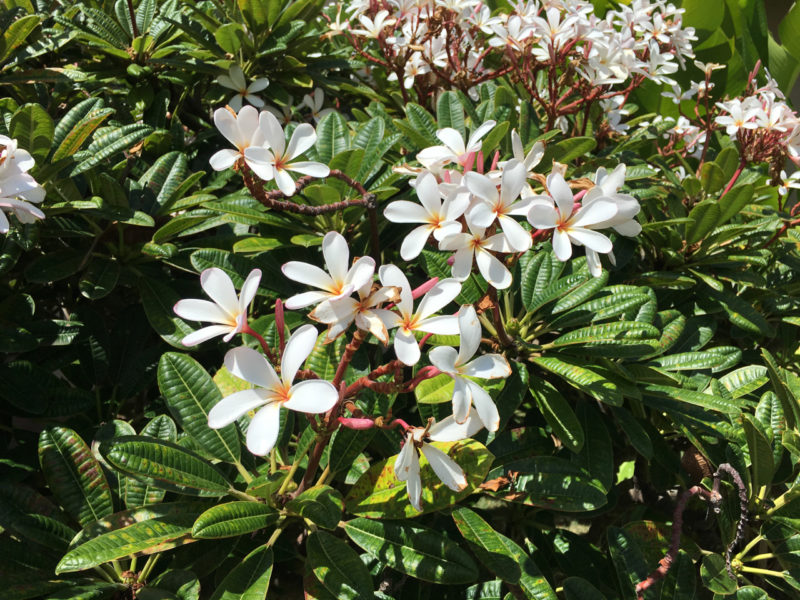
It was decided that we should have private quarters away from the office, so we moved into a house across the street, on a double lot which meant that we had a huge, empty back yard, dominated by an enormous mango tree. The smaller front yard had been made into a flower garden. When we arrived, there was a plumeria tree – one of my lifelong favorites for its beautiful scent and association with Hawaii, where we’d lived for a year when I was small. I was devastated when the tree soon died of some tree disease.
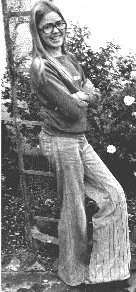
But there were also two magnificent white rose bushes flanking the front door, and lots of room for other flowers. There was also Bapak, the ancient caretaker/gardener whom I could work with and learn from. I was doing correspondence school on my own while both my father and stepmother worked. That only took me two or three hours a day, and there were no kids my age living nearby, so I had plenty of time to dedicate to the garden. I experimented on the rose bushes, learning to encourage them to change their shape by pruning, and watched over other flowers and plants which I chose in the market.
Bapak suggested that we plant vegetables in part of the backyard, which we did, though I don’t recall exactly what. I also wanted pets. After several disasters with dogs (two puppies that both got hit by cars, one dying in drawn-out agony), I decided on goats. We went to the market and got two black goats. The female was much larger, but the male made up for his diminutive stature in testicle size and sexual enthusiasm.
Bapak warned me that goats are difficult to pen, and he was right. Oddly, and much to my annoyance, the many times they escaped, they would ignore the vegetable patch right next to their pen and make their way into the front yard to eat my flowers. By the time I went off to boarding school, it had been decided that the goats were too much trouble to keep, so we donated them to Bapak’s Buddhist temple, where presumably they would be kept for milk and breeding, rather than to be eaten.
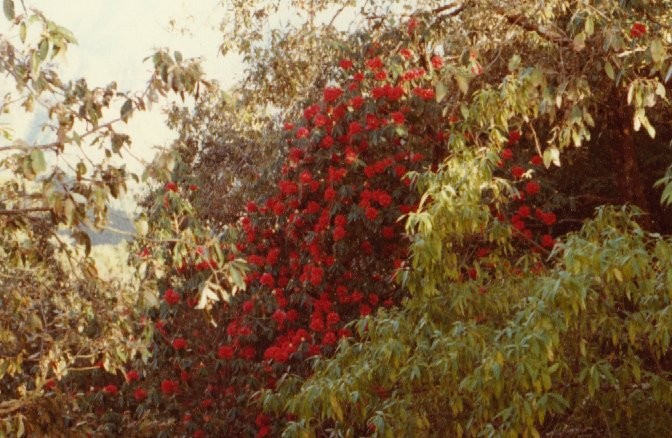
I then lived for four years in the Indian Himalayas, surrounded by mountain forest. Oddly, I did not learn much about the local vegetation at the time (I was too busy being a teenager), but the magnificent red rhododendron trees were unmissable in their season. (The photo at the top shows the red rhododendron I got for our new San Jose garden. It will take decades to achieve tree height.)
I did not have much opportunity to grow anything after that until I was married and settled with my family in a small apartment in Milan. It was not the most promising place to garden, but I was not alone in my determination to make our two tiny balconies flourish. Italian balconies, no matter how small, are often vibrant with plants and flowers. There were shops and market stalls selling plants. Some flowering plants, such as primula and cyclamen, would show up seasonally even at the local vegetable shops.
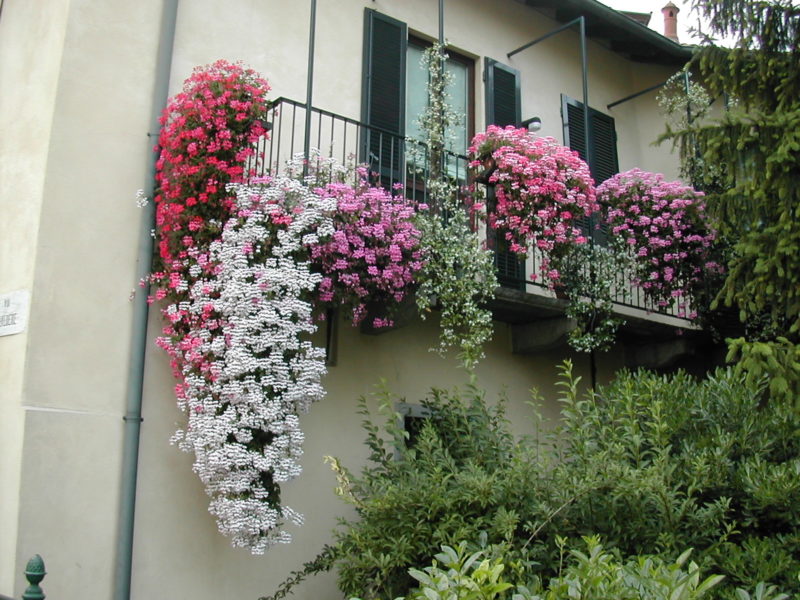
The first plant I bought for my new home was a little yellow primula. I was devastated when, after a while, it began to die. I could not figure out what I was doing wrong. Too much water? Too little? Too much or too little sun? Having had most of my exposure to gardens in the tropics, I had never grasped the concept of an “annual” plant that was supposed to grow, flower, seed, and die within a year. I thought all plants just kept growing, all the time, forever, as tropical plants did, with some merely having a dormant period in winter (like trees). But to just up and die on me? It took me a while to figure this out.
My balcony garden got more crowded, and was difficult to keep watered, especially in the hot summer when we would go away for weeks at a time. Fortunately, the balcony I grew most on was outside our bathroom. I hooked up a watering system with a timer, supplying it from a pipe under the sink. My then husband was convinced that there would eventually be some problem that would cause a leak, and he was right – the bathroom flooded and then the water puddled out into the hall, but those floors were marble and terrazzo anyway, so I think only a little of the wood floor in the adjoining bedroom got warped. This did mean I had to give up on automatic watering, and resign myself to everything dying over the summer.
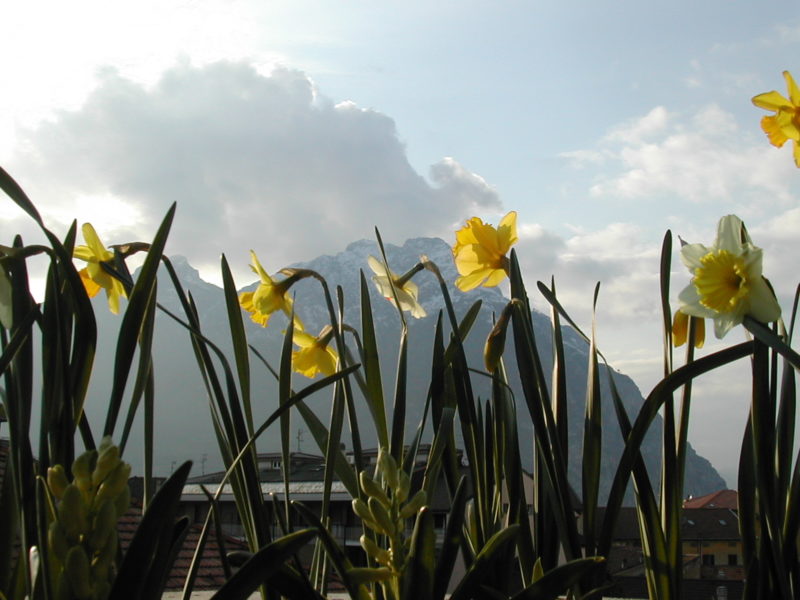
Then we moved to an apartment in Lecco, where I planted flower boxes on the balcony with daffodils, irises, and more. And then we bought a house which had its own garden, and I began gardening again in earnest. I wrote and photographed a lot about that at the time (eg, in March and June, 2007). A garden is a long-term project, and one of my few regrets in leaving Italy is that I have not been able to see all my work has come out. During my final visit last year to collect my remaining belongings, I observed that the roses badly needed pruning, but that was not surprising since Enrico had been out of the house for months following a stroke.
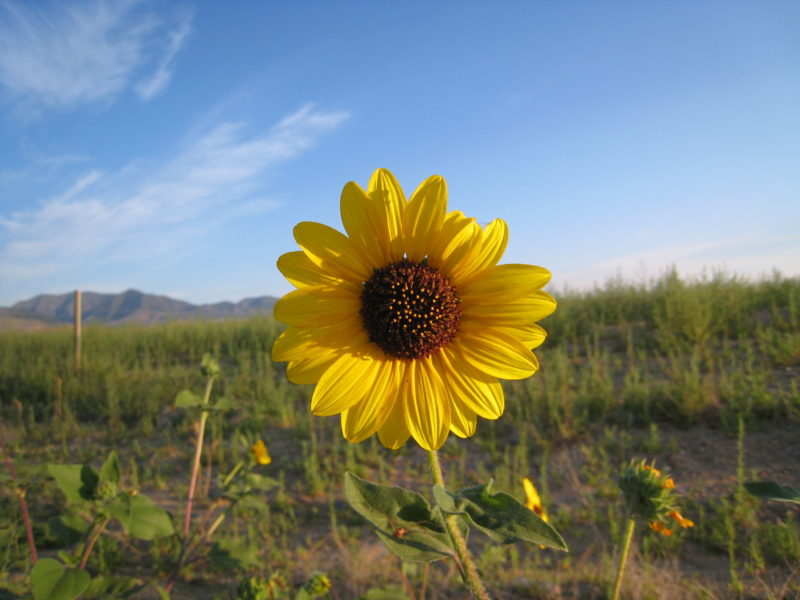
Back in the US, I lived first in someone else’s house in Colorado. I didn’t try to grow anything there, but took walks around the semi-wilderness nearby and observed the local wildflowers. In my various California apartments, I’ve been a dedicated balcony gardener. (At the Oakland apartment, I also took charge of the building’s front patch, tidying it up and adding plants and seeds to an area that had been sadly neglected for years).
Now we’re renting a house with a lot of gardening space that has been needing attention for some time. It even has a greenhouse, something I never dreamt of. I don’t know exactly what to do with it, never having had one before, but I’m experimenting. Given some recent experiences in this and other (visited) houses, Brendan’s expectations of our future lifestyle have changed from: “We’ll have a condo with a view of water” to: “We need a private pool and a greenhouse.” Well, that gives us something to aspire to!
